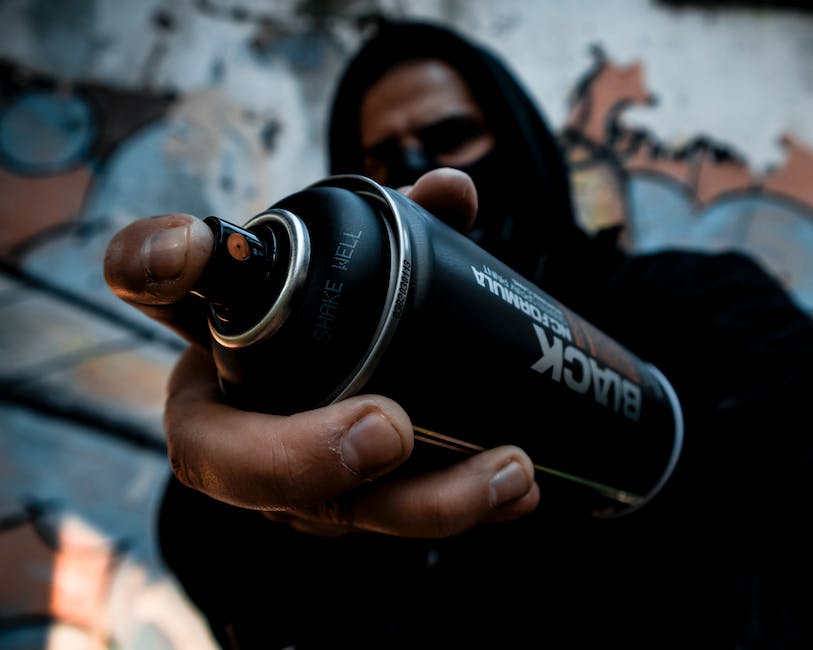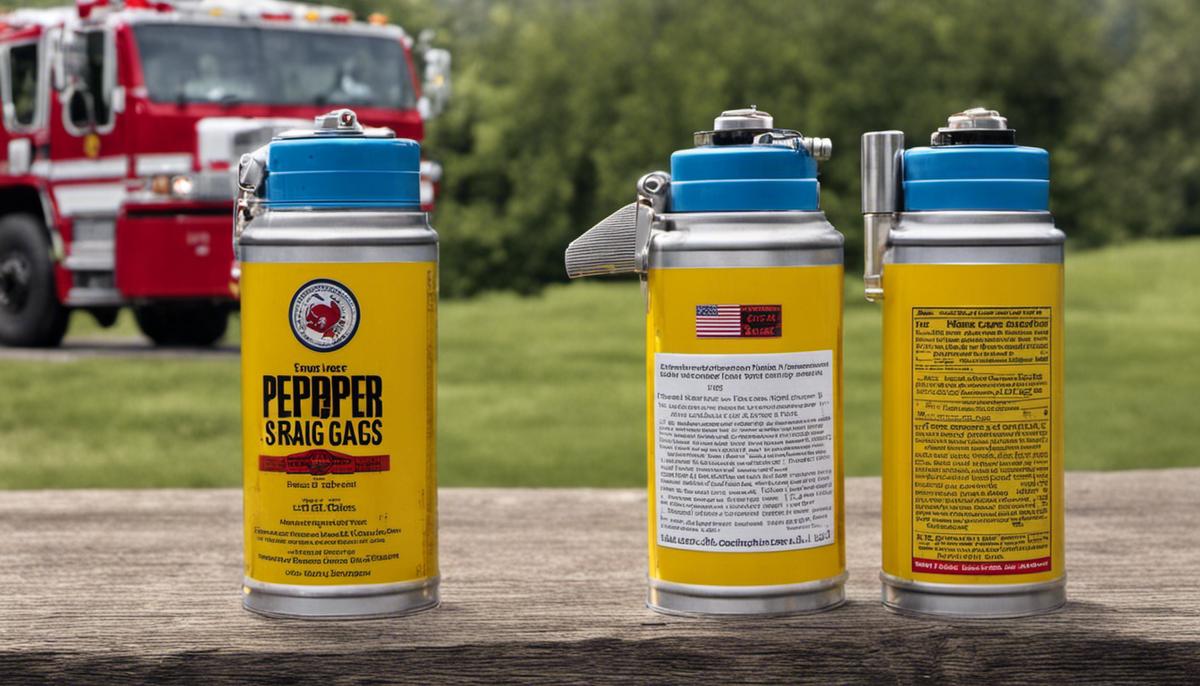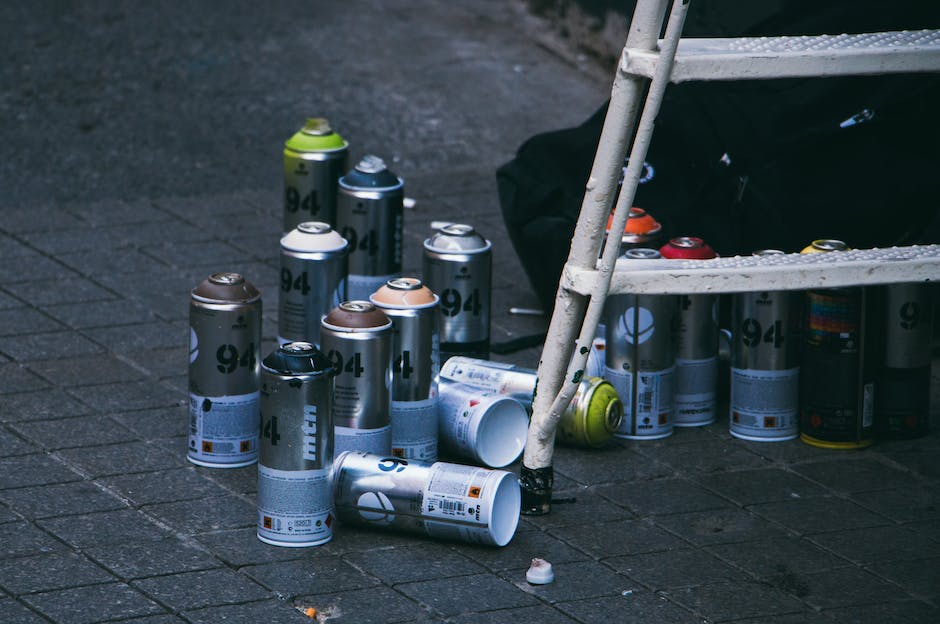Amid the current climate of social and political debate, the use of non-lethal force by law enforcement has been spotlighted in ways we’ve never seen before. Items such as pepper spray and tear gas are frequently employed both to deter unruly behavior and to control large crowds. However, public knowledge about these substances remains relatively limited. Are they the same thing? How do they affect humans? What are the legal implications of their use? This exploration aims to address these questions and empower its readers with detailed insights into these less-lethal alternatives to physical conflict. By educating ourselves, we can better understand and navigate the conversations surrounding their acceptable use.
Understanding Pepper Spray
Understanding Pepper Spray
Pepper spray, also known as Oleoresin Capsicum (OC), is a type of non-lethal, self-defense aerosol product that causes temporary blindness, difficulty breathing, runny nose, and the experience of intense burning pain when it comes in contact with a person’s eyes and skin.
Its primary active ingredient is capsaicin, a compound derived from the fruits of plants from the Capsicum genus, including peppers. This natural compound is then dissolved in a water- or oil-based solution, aerosolized, and packaged under pressure inside canisters. When the canister’s valve is opened, the liquid contents are exposed to the atmosphere and instantly vaporize, creating a fine mist that can disseminate over large areas in a short amount of time.
The immediate effects of pepper spray on humans are intense and debilitating, but temporary. When sprayed into the eyes, it causes an involuntary closing of the eyes due to severe irritation, temporary blindness, and pain. Breathing becomes difficult as the throat swells up as a reaction to the acute inflammation. These effects can last from 15 to 60 minutes depending on the strength of the spray and individual reactions.
The long-term effects of pepper spray are still a subject for continuous research; however, generally, properly administered application seems to have no lasting harm. Pepper spray is non-lethal but can pose serious risks to those with pre-existing health conditions, especially cardiovascular or respiratory conditions.
As far as the legality and regulations are concerned, the use of pepper spray in the U.S. primarily follows state regulations, not federal law, and varies significantly by state. While it is legal for private individuals to possess pepper spray in all 50 states, some states limit the size of the canister one can legally carry, or require a permit to carry and use the spray. Other legislation may include stipulations about age (usually 18 and over) and a lack of felony convictions.
While pepper spray is widely known for its use in self-defense, it is also used by law enforcement agencies and correctional facilities to subdue and control rowdy or violent individuals. Certain military forces use it in specialized grenades for clearing rooms and bunker areas.

Understanding Tear Gas
Exploring Tear Gas
To delve deeper into what tear gas is, it’s essentially a chemical substance referred to as a lachrymator agent. It’s designed to temporarily incapacitate individuals by irritating the mucous membranes, leading to crying, coughing, sneezing, breathing difficulties, eye pain, and temporary blindness. Its aim is not to cause lasting harm but rather to create a strong discomfort that helps control or disperse crowds.
Mechanism of Action of Tear Gas
The mechanism of action involves interacting with sensory nerves to cause an overreaction in the eyes and respiratory system. This reaction typically starts within seconds after exposure and can last up to 30 minutes after leaving the contaminated area. Its intended use is predominantly for crowd control, as its effects make it difficult for individuals to remain in the area where the gas has been distributed.
Ingredients of Tear Gas
The primary ingredient in most tear gas formulations is 2-chlorobenzalmalononitrile (CS), though there are many others such as chloroacetophenone (CN), or dibenz(b,f)-1,4-oxazepine (CR), and oleoresin capsicum (OC).
Direct and Residual Effects of Tear Gas
Upon exposure, tear gas can cause severe eye and respiratory pain, excessive tear production, and even temporary blindness. Some people may experience skin irritation or burns. These symptoms can last from 15-30 minutes after exposure but prolonged exposure or exposure to a high concentration can lead to blindness or severe chemical burns. Residual gas can linger in the area for up to several hours after its initial release, or on clothing and other materials for weeks without proper decontamination.
Legal Regulation of Tear Gas
In the United States, the use of tear gas is governed by both state and federal laws. Police are allowed to use tear gas for riot control or to handle violent situations. However, its use in warfare is prohibited by various international treaties, including the Chemical Weapons Convention. For the general public, the legality of carrying and using tear gas for self-defense varies greatly by state.

Photo by dani_franco on Unsplash
Pepper Spray vs Tear Gas: A Comparison
Contrasting Pepper Spray and Tear Gas: Fundamental Facts
Pepper spray, sometimes referred to as Oleoresin Capsicum (OC), is made from a compound found in chili peppers. It’s typically supplied in aerosol cans and directed towards the face of an aggressor, leading to an unbearable burning sensation. Its effects can include respiratory issues, coughing, and a short-term loss of sight.
Conversely, tear gas, initially termed lachrymator agents, inflicts irritation to the eyes, skin, and respiratory tract. CS gas and CN gas are common types of tear gas – both are in powder form and are typically combined with a liquid or gas dispersant when used.
Potency
Pepper spray tends to be more potent than tear gas. This is mainly because the active ingredient in pepper spray, capsaicin, is much more irritating than the materials found in tear gas. Additionally, the effects of pepper spray are immediate, while tear gas takes more time to work.
Aftereffects
Both pepper spray and tear gas cause various negative effects that can last for some time after exposure. Pepper spray effects might last from 30 minutes to an hour, causing an intense burning sensation in the eyes and skin, temporary blindness, difficulty breathing, and coughing.
Tear gas, on the other hand, causes a burning or stinging sensation in the eyes, throat, and skin. Exposure can also lead to excessive tear production, coughing, and difficulty in breathing. These symptoms can persist for up to an hour but generally start to dissipate sooner than the effects of pepper spray.
Legal Considerations
One essential legal distinction is that tear gas was classified as a warfare agent under the 1993 Chemical Weapons Convention, leading to its ban in wartime by numerous international treaties. Conversely, pepper spray lacks this designation due to its organic nature, and its use is hence more widespread among both law enforcement agencies and the general public.
In many states in the U.S., it’s legal for citizens to purchase and carry pepper spray for personal protection. However, there are often regulations regarding the size or strength of the canister. It’s crucial to check the laws in your area before purchase or use.
Tear gas, on the other hand, is often classified as a prohibited weapon for civilian use. It’s typically only legally used by law enforcement or military personnel for crowd control or riot suppression.
Usage Tactics
Pepper spray is usually used in close quarters, as it requires direct contact with the attacker’s face to be effective. It’s best used in a defensive scenario where the user is being directly threatened.
Tear gas is most often deployed in large, open areas to disperse crowds. It’s not as practical for personal defense, as the gas can easily blow back onto the user or affect innocent bystanders.
Verdict on The Pepper Spray vs. Tear Gas Debate
When considering defensive tools, pepper spray gains an upper hand due to its immediate impact, simple usage, and legality for personal defense purposes. The flip side, however, is that it mandates close range with the attacker and might prove ineffective in cases wherein the attacker has high levels of intoxication or pain tolerance.
On the other hand, tear gas has the advantage of impacting a wider radius and not needing to directly come into contact with the target to be effective. However the downsides are its slow activation, potential to harm bystanders unknowingly, and it is generally considered unauthorized for civilian usage.

Cases of Use and Misuse
Examples of Usage: A Look from the Law Enforcement Point of View
Law enforcement agencies rely on non-lethal tools like pepper spray and tear gas to control crowds and incapacitate suspects. To exemplify, pepper spray was frequently used to disseminate crowds during the Occupy Wall Street movement in 2011. Fast forward to 2020, tear gas was employed extensively amid the George Floyd protests to control the surging crowds.
Law enforcement usually argues that using pepper spray and tear gas is compulsory to maintain public safety and order. Nonetheless, such arguments have often been met with criticism and raised concerns about the proportionality of their use, necessity, and possible health implications.
Instances of Misuse: Law Enforcement Perspective
There are numerous reported instances where the use of pepper spray and tear gas by law enforcement is considered excessive, and thus, misuse of force. One prominent case occurred during a 2011 student protest at the University of California, Davis, when a police officer casually pepper-sprayed seated protesters who posed no apparent threat.
Internationally, the misuse of tear gas was evident during the 2019 Hong Kong protests. The excessive use on densely populated city streets led to widespread health complaints and critiques about the misuse of this non-lethal weapon.
Notable Instances of Use: Civilian Perspective
Pepper spray is also widely used by civilians for self-defense. One well-known civilian use involved a woman in New York City in 2012, who used pepper spray to fend off a group of teenage attackers. The event sparked debates about the legality and ethics of pepper spray use by civilians.
Tear gas, on the other hand, is not typically accessible or legal for civilian use in many jurisdictions. However, it has been reportedly misused by civilians in some instances, such as during factional conflicts.
Public Perception and Legal/Ethical Discussions
The application and abuse of pepper spray and tear gas have received various reactions from society. Some people regard these items as vital instruments for ensuring security and maintaining order, while others believe that they are frequently misused, leading to unnecessary injuries and violating the right to peaceful protest.
Various legal and ethical discussions surface regarding their usage. From a legal perspective, pepper spray is typically allowed for use in self-defense within particular boundaries, whereas tear gas usage by civilians is generally prohibited in many areas. The ethical discussions often revolve around whether their application or overuse means an encroachment on civil liberties or human rights, particularly during peaceful demonstrations.
Health risks associated with exposure further contribute to these discussions, with some advocating that the potential health risks from contact with pepper spray and tear gas are too considerable to rationalize their application in numerous situations. For instance, it’s been suggested that the impact of tear gas – which can lead to serious respiratory problems among other symptoms – is overly harsh for it to be ethically used for crowd management. These discussions are ongoing, as society and policymakers seek to strike a balance between security issues and safeguarding the rights and health of individuals.

Safety Measures and First Aid Responses
Safety Measures: Minimizing the Effects of Pepper Spray and Tear Gas
Safety measures to minimize the effects of pepper spray and tear gas involve protecting your respiratory system, skin, and eyes. Wearing protective goggles and covering your face with a cloth soaked in vinegar or lemon juice may offer some protection, as these substances can help neutralize the effects of the chemicals. Cover your skin as much as possible and try to avoid direct exposure to the substances.
First Aid Responses: Direct Exposure
If you or someone else has been exposed to either of these substances, it’s essential to act fast. Upon exposure to pepper spray or tear gas, immediately get to an area with fresh air. Remove contaminated clothing and do not rub the affected areas as this might further spread the irritants. Blink rapidly to facilitate tear production and natural eye cleansing. After leaving the area, gently wash your skin and eyes using a mix of water and mild detergent, baby shampoo, or a solution of baking soda and water.
First Aid Responses: Ingestion or Inhalation
In cases in which the substance is swallowed or inhaled, seek immediate medical attention. While waiting for them to arrive, if the person is conscious, hydrate them with plenty of water, avoiding caffeinated or alcoholic beverages which can further dehydrate them. If the person is having difficulty breathing, help the person sit up in a position that aids in breathing.
Both pepper spray and tear gas are potent substances that can cause immense discomfort if you’re exposed to them. Knowing these safety measures and first aid responses can greatly mitigate their effects and aid in recovery.

Arming ourselves with knowledge is a key step in ensuring that significant discussions about crowd-control methods, and their real-world application, remain fact-based. Understandably, pepper spray and tear gas are two contrasting substances with different effects and legal considerations. It’s important to remember, though, that while they serve a purpose in maintaining law and order, misuse can lead to undesirable outcomes for both authorities and the public they serve. Safety measures and correct first-aid responses could mean the difference between quick recovery and lasting harm. Hopefully, our exploration has shed light on these factors and contributed positively to the ongoing discourse about the appropriateness, or inappropriateness, of using such substances in various scenarios.
Bliss Ferdinand is a resilient single mother and the founder of pepperspraymum.com, a blog dedicated to empowering women and promoting personal safety. With a passion for self-defense, Bliss shares her knowledge and experiences to help other mothers protect themselves and their families. Through her blog, she educates her readers about the effective use of pepper sprays, offering valuable insights, product reviews, and practical tips on staying safe in various situations. Bliss’s commitment to her community has inspired many women to take charge of their own security, making pepperspraymum.com a go-to resource for those seeking practical advice and peace of mind

